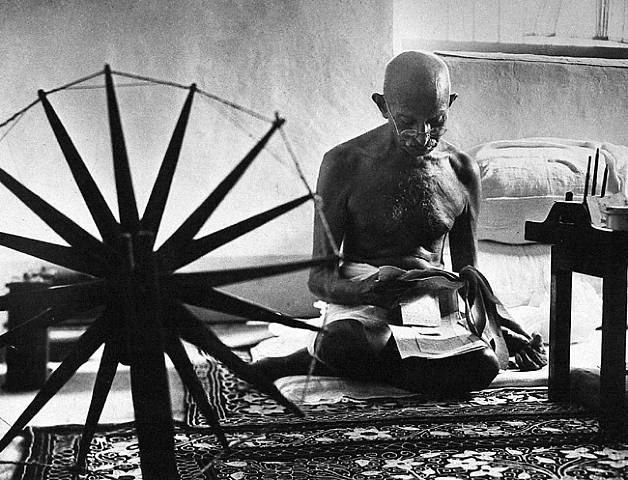Simplicity & few possessions make a true Gandhian
Culture
On the 151st birth anniversary of Mahatma Gandhi, the world is facing twin and unprecedented challenges – global warming and the Covid-19 pandemic. The solution to both lies in following the Mahatma’s principles of adopting a minimalistic life, possessing only the bare essentials.
“It is incredible how a simple man left such a rich legacy for the world and changed the lives of millions of people forever. Though, like all of us, he had his faults and personal challenges, his quest for truth and message of non-violence is as valid and inspiring today as ever before,” Manish Sharma, a lecturer in Gandhian and Peace Studies at Panjab University, tells Media India Group.
Minimalism or simple living is at the heart of Gandhi’s idea of responsible living. Minimalism, as practised today, is focused on simplifying one’s life by implementing a philosophy of decluttering, removal of distractions and reduction in possessions that don’t add value to life.
Sharma explains that despite being a globally renowned leader and head of a household of five, Gandhi never worried about his possessions, legacy and heirs. “Simplicity or a minimalist lifestyle is the most striking thing that sets Gandhi apart from other world leaders. He lived, talked and acted with candour. When public figures thought looking sharp was important, Gandhi took pride in being clad in a white dhoti, (a long piece of cloth worn around the waist by men),” he adds.
Sharma goes on to say that Gandhi owned very few things. The greatest luxury he had was a blanket to cover his bare chest during the winters. His other worldly possessions consisted of nothing more than a walking cane, a pair of glasses, a pair of sandals, an eating bowl, a watch and a few pieces of cloth.
Some historians believe that Gandhi owned no more than 10- 20 things in all at the time of his demise. Famed author and historian Ramchandra Guha has also called Gandhi ‘the ultimate minimalist,’ in one of his speeches.
Gandhi’s idea of minimalism was not just associated with a simple lifestyle but extended to cause of environment and liberation of self, long before the world became conscious of terms like climate change and global warming.
“Gandhi was a practitioner of recycling decades before the idea became popular among general population. Though he doesn’t mention the term ecology or environment often in his writings, it becomes evident from his behavioural practices that he has mentioned in his day to day writings. Not buying anything extra, reusing old envelopes for writing, using old, tattered clothes for mopping, to mention a few,” adds Sharma.
In his autobiography, My Experiments with Truth, Gandhi has written that minimalism paves a path for liberation and self-reliance, too. He calls for living by being conscious and considerate of the diverse and varied relationships humans maintain with their surroundings.
Sharma says, “It is not the passion of the self that is at the forefront of this minimalism, but our responsibility towards the other. It is in this vein that Gandhi asks us to be trustees of this planet, not its owner.”
Sharma further explains that Gandhi’s life teaches one how to be responsible consumers in what we eat, wear and use, by being conscious of the consequences of our consumption practices.
“It is only when we are not dependent on exploitative economic and social arrangements that we can inspire ourselves and others to not cooperate with systems that don’t fulfil ethical obligations. Most importantly, he wants us to be self-sufficient or self-reliant as individuals. Gandhi’s minimalism hopes to liberate the other and in the process liberate one’s own self,” Sharma sums up.






